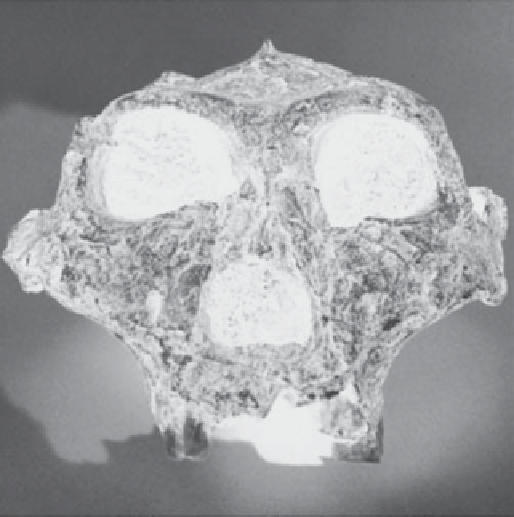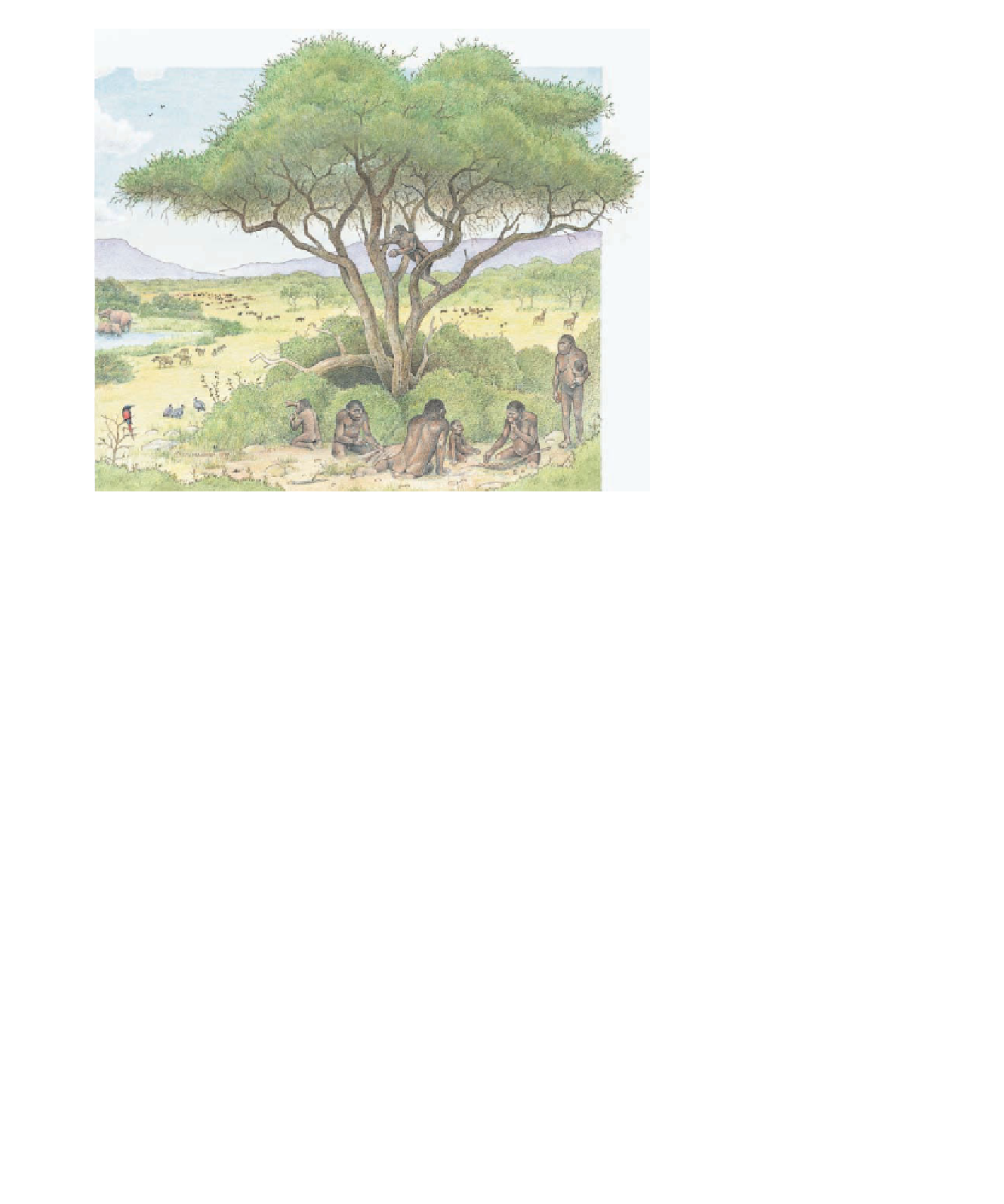Geology Reference
In-Depth Information
variety or subspecies (
Homo
sapiens neanderthalensis
), whereas
others consider them as a separate
species (
Homo neanderthalensis
).
In any case, their name comes
from the fi rst specimens found in
1856 in the Neander Valley near
Düsseldorf, Germany.
The most notable differ-
ence between Neanderthals and
present-day humans is in the skull.
Neanderthal skulls were long and
low, with heavy brow ridges, a pro-
jecting mouth, and a weak, reced-
ing chin. Their brain was slightly
larger, on average, than our own
and somewhat differently shaped.
The Neanderthal body was more
massive and heavily muscled than
ours, with rather short lower limbs,
much like those of other cold-
adapted people of today.
Based on specimens from
more than 100 sites, we now
know that Neanderthals were
not much different from us, only
more robust. Europe's Neander-
thals were the fi rst humans to move into truly cold climates,
enduring miserably long winters and short summers as they
pushed north into tundra country. Their remains are found
chiefl y in caves and hut-like rock shelters, which also contain
◗
Figure 23.33
African Pliocene Landscape Recreation of a Pliocene landscape showing
members of
Australopithecus afarensis
gathering and eating various fruits and seeds.
Perhaps the most famous of all fossil humans are the
Neanderthals
, who inhabited Europe and the Near East
from about 200,000 to 30,000 years ago (
Figure 23.37).
Some paleoanthropologists regard the Neanderthals as a
◗
◗
Figure 23.35
Australopithecus robustus
The skull of
Australopithecus robustus
had a massive jaw, powerful chewing
muscles, and large, broad, fl at chewing teeth apparently used for
grinding up coarse plant food.
◗
Figure 23.34
Australopithecus africanus
A reconstruction of
the skull of
Australopithecus africanus
. This skull, known as that of
the Taung child, was discovered by Raymond Dart in South Africa in
1924 and marks the beginning of modern paleoanthropology.



Search WWH ::

Custom Search